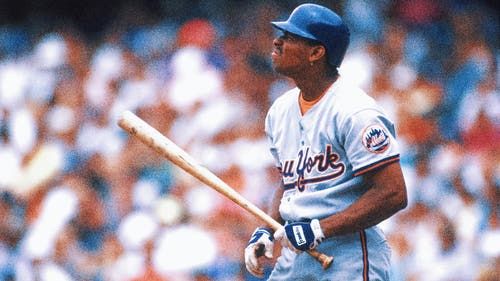
Relentlessness defines historic career
The 597th save of Mariano Rivera’s career wasn’t particularly artistic or efficient and wouldn’t have been earmarked at all had it not been for its place in history.
By nailing down the Yankees’ 11-10 win over the Orioles on Monday, Rivera moved closer to crashing through the walls of the all-time record — just four short of Trevor Hoffman’s 601, five away from the official declaration of what we’ve known since the Joe Torre-era.
Those 25th-through-27th outs? They carry the stamp: Property of Mariano Rivera. No one’s done it as long, no one’s done it with such dominance or forged an entire legacy with just one pitch.
We’ve memorized these credentials. We know the choreography, too. The bullpen gates swing open, Metallica blasts through the Stadium PA system and with the easy, rolling gait of a man who’s battled the aging process to a draw, Rivera arrives to break hearts.
How much longer can he excel? How much longer before Rivera finally makes good on his promise to retire and begin a second life in the ministry? These are questions the Yankees don’t dare indulge — the images are too unsettling, even with the formidable Rafael Soriano poised to someday inherit the closer’s job.
The Yankees instead prefer to live in the here-and-now with Rivera, ready to celebrate his record-breaking 602nd save, which could occur during next week’s west coast trip. Not that Rivera’s ego requires a home-field party. Anyone who knows the man isn’t surprised at his reaction to becoming a history-maker.
“If it happens, it happens,” Rivera said the other day. “It’s not something I lose sleep over.”
He’s the anti-everything in the age of the overprivileged athlete: no bling, no posse, no commercial endorsements. Rivera behaves as a 41-year-old should. He doesn’t do drugs, doesn’t drink and is so obsessed with getting restful sleep he’s in bed “within an hour” of the last out of a night game.
That would account for Rivera’s relentless attack on hitters, ever since he learned the cut-fastball in 1999. Since then, he’s been as predictable as a cyborg, although that’s not to say the American League hasn’t at least partially closed the gap.
Opposing hitters’ contact ratio this year is 83.1 percent — the highest of Rivera’s career by a percentage point. The league is clearly more aggressive, too, swinging at 53.8 percent of Rivera’s pitches, another career high. But look at what the AL finds appealing: 45 percent of those pitches are out of the strike zone, a huge surplus considering the MLB average is just 30.5 percent.
Of course, hitters have always tried to seize the initiative against Rivera. Working the count is pointless; he throws too many strikes. The best strategy is to simply attack. But the fact that opponents are chasing so many pitches out of the zone suggests Rivera is still masking that cutter, even though his velocity has dipped into the low 90s.
That’s the beauty of Rivera’s long career: What worked in his prime is still effective today. It’s why GM Brian Cashman said, “everyone needs to appreciate what they’re seeing.”
It’s a clinic of focus and competitiveness, but more than that, Rivera is blessed with mechanics to die for. Before he went on the disabled list this summer, Joba Chamberlain was marveling at all the little things Rivera does right, one pitch after another.
“Look at Mo’s delivery, looks at how he repeats it,” said Chamberlain. “He does the same thing every time. That’s a very hard thing to do… there’s never any added stress on his arm because all the parts move the same way every time.”
Rivera modestly dismisses the praise, insisting anyone can perfect their craft with hard work — even though he knows that’s a myth. But Rivera prefers not to separate himself from other relievers; he’s constantly giving tips and advice, not just to teammates, but rival closers, as well.
Rivera is happy to demonstrate the grip on his cutter to anyone who asks, as long as they understand the caveat. “I’m not perfect,” he says, evidenced by his struggle against Baltimore. Summoned to protect a two-run lead with Mark Reynolds on first base, Rivera was unable to stop Reynolds from stealing second, or No. 9 hitter Ryan Adams from singling to center to cut the Yankees’ lead to 11-10.
Rivera then grazed Nolan Reimold, putting runners on first and second, and the mini-crisis deepened after a successful double-steal. But Rivera struck out J.J. Hardy with — what else? — a 2-2 cutter to end the game.
Rivera later called the ninth inning “a battle” the Yankees hope won’t repeat itself in October. He’s their last line of defense against the Red Sox, the one team that appears able to solve the mystery of that cutter.
Rivera has blown 14 saves against Boston during his career (16 including the postseason). His record is 12-7, with a 2.85 ERA and 1.23 WHIP.
The ERA and WHIP are both higher than his lifetime averages, but that’s understandable — the Red Sox are historically tough for anyone to fully contain. As for the blown saves, look at them through a different prism: 14 mistakes in 15 years of closing isn’t necessarily worrisome, not when you consider the larger body of work.
As the New York Post’s Joel Sherman recently calculated, Rivera led the majors with 278 saves in his first seven seasons as a closer, 1997-2003. In his second seven seasons, 2004-2010, Rivera led the majors with 276 saves. With Hoffman now in his sights, Rivera shows no sign of decelerating. Welcome to infinity.










